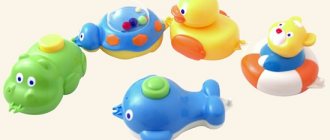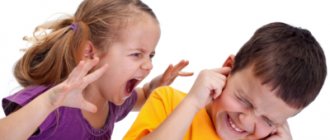09/04/2019 Category: Pregnancy in goodness
What to do if you swallow a plum pit?
- A swallowed plum pit is fraught with considerable danger, especially if it enters a child’s body. The sharp edges of the bone can cause internal damage to the gastric mucosa and intestines. Therefore, it is advisable to take your child to the doctor immediately. You should not self-medicate; you should not give laxatives, food or drink.
If it is not possible to get to the clinic, then you need to monitor the condition of the victim; if your stomach hurts, you feel sick, or there is blood in your stool, you must immediately call an ambulance.
If the bone did not have sharp edges and the child does not experience discomfort, then the problem will be solved by itself, in a completely natural way.
You don’t need to do anything, just continue to eat plums calmly.
Nature has taken such care that many seeds do not stay in our body and come out along with feces, especially since plums weaken.
It’s just that some people are afraid of the poison that is supposedly contained in plum pits. So only the kernel contains this poison, and you need at least half a kilo of these kernels to feel nauseated. But the bone itself will not open in the body, so it will come out intact.
Pits from plums, cherries and other fruits are accidentally swallowed by many children and even adults. Nothing wrong with that. It will calmly pass through the digestive tract and will be released naturally in a few hours. There is nothing poisonous in the seeds or sharp, cutting edges and therefore cannot seriously damage anything.
If a person is able to eat or drink anything without difficulty and there are no special symptoms associated with his breathing, then the bone should come out normally.
But if a person feels that breathing is difficult while standing or lying down, then, of course, you need to call an ambulance and get advice. Often a person is given some bread and water to help the bone pass further.
You don’t need to do anything; almost any seeds from edible berries come out of the body without difficulty. You can, of course, wash down the bone with enveloping jelly, or eat stewed carrots with sour cream, which quickly gives volume and softly weakens.
But you don’t have to do anything, that’s what everyone usually does.
If you or your child swallowed a plum pit, then there is no need to worry about anything. The bone will come out naturally on its own, and you do not need to take any additional actions for this.
If a plum pit gets into the human body (the person swallowed it), then you need to try to calm down and everything will pass like smoke from white apple trees.
The bone will not get stuck in the human body, but will quietly come out with the feces.
It all depends on which path this bone has taken. For example, if a plum pit is stuck in your respiratory tract and you cannot breathe, then the person nearby must pull it out so that you do not get hurt. In this case, tweezers will help.
If you have already swallowed a bone and see this answer, then it is advisable to immediately take an additional amount of enzymes that will help digest it better. You can use ordinary pancreatin or festal. Or buy a blister of Wobenzin - this is the best way to digest the bone as much as possible. Take enzymes 30 minutes before meals and drink plenty of water. Try to avoid going to the toilet for as long as possible.
If you accidentally swallow a plum pit
, the main thing is not to worry and not take any action. In a day or two, the bone will leave your body naturally along with other remnants of your food (what is left of them).
If a very small child swallows a plum pit, you need to make sure that the pit comes out. If it does not come out and the child has a stomach ache, you need to go to the hospital.
For young children, all fruits are given peeled and pitted. But what to do if the parents didn’t keep track and the child swallowed a pit from a plum (apricot, cherry)? First of all, don't panic. Calm, confident actions will help you cope with the situation without danger to your baby. Let's find out how much harm a bone can cause and in what cases you need to see a doctor.
Why are bones dangerous?
The harm that a swallowed object can cause depends on its size and sharpness of the edge.
- Small bones are not dangerous even for small children. Cherries usually pass easily into the stomach and further into the intestines. They have a smooth surface, so they do not damage the mucous membrane of the gastrointestinal tract. But if the baby has eaten a lot of cherry pits, then obstruction or an inflammatory disease such as appendicitis may occur.
- Plum and apricot pits are larger. Plum ones have the most threatening size, and sharp edges make such an object dangerous for injury. If a child under 6-7 years of age swallows a plum pit, this is a cause for concern.
- Small fish bones are dangerous because they have sharp edges and can become firmly stuck in the throat or esophagus. If a small fish bone gets into the stomach, it dissolves under the action of hydrochloric acid and becomes harmless. Large bones can severely damage the lining of the esophagus and stomach. Small children should not be given fish in its natural form, but it is better to offer them fish fillets or cutlets.
The main danger is from foreign objects entering the larynx and trachea. In this case, the airways are blocked - completely or partially - and the child can die from suffocation in a matter of minutes.
A child swallowed a plum pit - when will it come out?
If the parents find out that the baby still ate the plum along with the pit and is not bothered by acute pain, they need to wait a little. After 12-48 hours, the foreign object will most likely be passed in the stool.
In most cases, if a child at 3 years old swallows a plum pit and it does not get stuck in the esophagus, he behaves as if nothing happened. Therefore, the best way to help a baby who runs, jumps, and does not complain of pain and malaise is not to interfere with a foreign object leaving the body naturally. You just need to be a little patient and wait.
Signs
Parents do not always see that a child has swallowed a foreign object. Children under the age of 1.5-2 years are usually strictly monitored, but an older child may be left unattended when this unpleasant event occurs. Sometimes the child himself tells his parents that he swallowed a bone. But it happens that children do not pay attention or are afraid to tell adults about it.
How do you know if your child has swallowed a bone? The following signs are possible.
- If an object enters the trachea, it blocks the airway. Characterized by a severe cough and inability to speak; breathing is difficult or the ability to inhale is completely absent.
- There may be no symptoms when the object passes into the intestines. In this case, you need to examine the feces to make sure that the bone has left the body.
- If the bone is stuck in the esophagus, the child will have difficulty swallowing. The more tightly the object is stuck, the more saliva will be released. The child experiences anxiety and pain in the chest.
- Painful urge to vomit.
- Severe abdominal pain.
- Blood in stool.
Signs that your baby has swallowed a plum pit
If the baby is not yet two years old, he is constantly in the field of view of his parents. Older children are less strictly supervised. That is why sometimes it happens that parents did not even notice how their child swallowed a plum pit. Sometimes the son or daughter themselves admit that such a fact took place. But most often, children either do not notice that they have swallowed a foreign object, or are simply afraid to admit it.
The following signs may indicate that such an unpleasant incident has occurred. If an object gets into the trachea and blocks the airways, the child will cough heavily, breathing will be difficult, or even the baby will not be able to take a breath.
If a child swallows a plum pit and it gets into the intestines, there may not be any symptoms. If there is any suspicion that the fruit kernel has been eaten, the stool should be examined. This must be done to ensure that the foreign object has come out.
In the case where the bone is stuck in the esophagus, the child will either not be able to swallow at all, or this action will give him discomfort. The baby will begin to feel anxiety and pain in the sternum and abdomen, and vomiting. There will be dried blood clots in the stool.
What to do?
What to do if your baby swallows a cherry pit? Most likely it will come out naturally. In young children, stool should be examined. If the foreign object does not leave the intestines within several days, contact your local doctor.
- If your child has eaten a plum or apricot pit, call an ambulance or take the child to the clinic yourself
Attention!
If vomiting, severe abdominal pain, or blood in the stool occurs, it is necessary in any case to immediately take the child to the hospital.
- If there are signs that an object has entered the respiratory tract and is preventing breathing, then you will need to provide first aid to the child yourself. We'll tell you how to do this below.
You should not try to feed a child in order to push an object stuck in the esophagus.
The baby swallowed a plum pit - what should I do?
The first and most important thing parents should do when their child swallows a plum pit and it immediately goes into the intestines is to stop worrying and panic. You should simply examine the baby's stool for several days to see that the foreign body has come out and to calm down.
However, there are several signs that indicate that a child needs a doctor:
- discomfort and pain in the abdominal area that increases over time;
- feeling of nausea or vomiting repeated several times;
- blood in stool.
What not to do?
- give laxatives;
- induce vomiting;
- water or feed the child;
- push the fish bone through the bread crust.
If there is a threat to life due to difficulty breathing, first aid must be provided to the child. Intervention should be carried out if the following signs are observed:
- the baby wraps his hands around his throat;
- the skin turns blue;
- the child is choking;
- the mouth is open, saliva flows from it;
- the baby suddenly fell and lost consciousness.
If the ability to breathe is preserved, then there is no need to carry out any manipulations - this can push the bone further into the trachea and aggravate the situation. Take your baby to the emergency room, they will provide competent medical care.
If intervention is necessary to save a life, a series of actions are carried out aimed at removing the object from the respiratory tract. They do it as follows.
- They stand behind the person and clasp their arms around his waist.
- One palm is clenched into a fist and placed on the stomach in the area between the ribs and the navel.
- With the other palm, clasp your fist and press on the victim’s stomach four times. The direction of movement is from bottom to top, with the elbows spread to the sides.
- Repeat until the object leaves the respiratory tract.
This technique is used only if the child is over one year old and conscious.
In case of loss of consciousness, another method is used.
- The victim is placed on his side, his head is slightly pulled back, holding his chin.
- If there is no breathing, begin artificial ventilation.
- Take a deep breath.
- Press your mouth firmly against your baby's nose and mouth and exhale.
- Repeat five times.
- Check for breathing.
- If breathing has not been restored, you need to make 30 pressures with two fingers on the chest in its lower part.
- After this, take two more breaths and again press on the chest.
Artificial respiration continues until the victim breathes on his own, or until an ambulance arrives.
Cases of foreign objects getting into the windpipe in children are not uncommon, so every parent should know and be able to put these techniques into practice.
Let's summarize. Small fruit seeds with a smooth surface do not pose a threat to children. If the baby swallows such an object, it will be passed out in the feces in one or two days. During this time, you need to examine the stool, and if there is no bone in it, contact your local pediatrician.
It’s another matter if the baby swallows a large pit with sharp edges - from a plum or cherry plum. It can get stuck in the esophagus or damage the lining of the stomach. The baby must be taken to the hospital, where he will be given an x-ray to determine the location of the foreign object, and then the bone will be expertly removed.
Alas, even the most attentive parent is sometimes unable to keep track of everything that a small child does. A frequent cause for concern is a child swallowing a bone or other object. Closer to summer, this fear increases, since the time comes for the ripening of fruits, which the child will definitely want to try, and, perhaps, swallow a bone and, God forbid, choke on it.
A child swallowed a bone: why is it dangerous and what to do?
Call a doctor
For young children, all fruits are given peeled and pitted. But what to do if the parents didn’t keep track and the child swallowed a pit from a plum (apricot, cherry)? First of all, don't panic. Calm, confident actions will help you cope with the situation without danger to your baby. Let's find out how much harm a bone can cause and in what cases you need to see a doctor.
Why are bones dangerous?
The harm that a swallowed object can cause depends on its size and sharpness of the edge.
- Small bones are not dangerous even for small children. Cherries usually pass easily into the stomach and further into the intestines. They have a smooth surface, so they do not damage the mucous membrane of the gastrointestinal tract. But if the baby has eaten a lot of cherry pits, then obstruction or an inflammatory disease such as appendicitis may occur.
- Plum and apricot pits are larger. Plum ones have the most threatening size, and sharp edges make such an object dangerous for injury. If a child under 6-7 years of age swallows a plum pit, this is a cause for concern.
- Small fish bones are dangerous because they have sharp edges and can become firmly stuck in the throat or esophagus. If a small fish bone gets into the stomach, it dissolves under the action of hydrochloric acid and becomes harmless. Large bones can severely damage the lining of the esophagus and stomach. Small children should not be given fish in its natural form, but it is better to offer them fish fillets or cutlets.
The main danger is from foreign objects entering the larynx and trachea. In this case, the airways are blocked - completely or partially - and the child can die from suffocation in a matter of minutes.
Useful: How dangerous is low body temperature in children?
Signs
Parents do not always see that a child has swallowed a foreign object. Children under the age of 1.5-2 years are usually strictly monitored, but an older child may be left unattended when this unpleasant event occurs. Sometimes the child himself tells his parents that he swallowed a bone. But it happens that children do not pay attention or are afraid to tell adults about it.
How do you know if your child has swallowed a bone? The following signs are possible.
- If an object enters the trachea, it blocks the airway. Characterized by a severe cough and inability to speak; breathing is difficult or the ability to inhale is completely absent.
- There may be no symptoms when the object passes into the intestines. In this case, you need to examine the feces to make sure that the bone has left the body.
- If the bone is stuck in the esophagus, the child will have difficulty swallowing. The more tightly the object is stuck, the more saliva will be released. The child experiences anxiety and pain in the chest.
- Painful urge to vomit.
- Severe abdominal pain.
- Blood in stool.
What to do?
What to do if your baby swallows a cherry pit? Most likely it will come out naturally. In young children, stool should be examined. If the foreign object does not leave the intestines within several days, contact your local doctor.
- If your child has eaten a plum or apricot pit, call an ambulance or take the child to the clinic yourself
Attention!
If vomiting, severe abdominal pain, or blood in the stool occurs, it is necessary in any case to immediately take the child to the hospital.
- If there are signs that an object has entered the respiratory tract and is preventing breathing, then you will need to provide first aid to the child yourself. We'll tell you how to do this below.
Now let's talk about what is not recommended to do if your baby swallows a pit from a plum, cherry or fish.
You should not try to feed a child in order to push an object stuck in the esophagus.
What not to do?
Before arriving at the hospital, it is not recommended to self-medicate, as this can harm the baby. Here's what you shouldn't do if your child swallows a foreign object:
- give laxatives;
- induce vomiting;
- water or feed the child;
- push the fish bone through the bread crust.
Child choked: first aid
If there is a threat to life due to difficulty breathing, first aid must be provided to the child. Intervention should be carried out if the following signs are observed:
- the baby wraps his hands around his throat;
- the skin turns blue;
- the child is choking;
- the mouth is open, saliva flows from it;
- the baby suddenly fell and lost consciousness.
If the ability to breathe is preserved, then there is no need to carry out any manipulations - this can push the bone further into the trachea and aggravate the situation. Take your baby to the emergency room, they will provide competent medical care.
If intervention is necessary to save a life, a series of actions are carried out aimed at removing the object from the respiratory tract. They do it as follows.
- They stand behind the person and clasp their arms around his waist.
- One palm is clenched into a fist and placed on the stomach in the area between the ribs and the navel.
- With the other palm, clasp your fist and press on the victim’s stomach four times. The direction of movement is from bottom to top, with the elbows spread to the sides.
- Repeat until the object leaves the respiratory tract.
This technique is used only if the child is over one year old and conscious.
In case of loss of consciousness, another method is used.
- The victim is placed on his side, his head is slightly pulled back, holding his chin.
- If there is no breathing, begin artificial ventilation.
- Take a deep breath.
- Press your mouth firmly against your baby's nose and mouth and exhale.
- Repeat five times.
- Check for breathing.
- If breathing has not been restored, you need to make 30 pressures with two fingers on the chest in its lower part.
- After this, take two more breaths and again press on the chest.
Useful: A pediatrician talks about massage for infants
Artificial respiration continues until the victim breathes on his own, or until an ambulance arrives.
Cases of foreign objects getting into the windpipe in children are not uncommon, so every parent should know and be able to put these techniques into practice.
Let's summarize. Small fruit seeds with a smooth surface do not pose a threat to children. If the baby swallows such an object, it will be passed out in the feces in one or two days. During this time, you need to examine the stool, and if there is no bone in it, contact your local pediatrician.
It’s another matter if the baby swallows a large pit with sharp edges - from a plum or cherry plum. It can get stuck in the esophagus or damage the lining of the stomach. The baby must be taken to the hospital, where he will be given an x-ray to determine the location of the foreign object, and then the bone will be expertly removed.
Adblock detector
Source: https://agushkin.ru/zdorove/rebenok-proglotil-kostochku.html
Why are bones dangerous?
The harm that a swallowed bone can cause directly depends on its size and how sharp its edges are.
- Small-sized seeds (cherries, cherries, strawberries), usually do not harm even small children, but on the contrary, they will only make things better, since a large number of seeds can cleanse the intestines, which is useful for some children. But you shouldn’t specifically feed your child cherry pits. The child may choke. In addition, the surface of such bones is smooth and if a child swallows it, it will not damage his mucous walls.
But if a child swallows a large number of cherry or other small seeds, then there is a chance of severe inflammation of the appendix or simply intestinal obstruction.
- Plum and apricot pits pose a much more serious danger, since their size is quite large and if a child chokes on such a pit or swallows it, it can harm him by injuring the mucous membrane with sharp edges or causing suffocation. Therefore, you should remove the pit from the fruit in advance, and only then give it to the baby.
- A fish bone, even the smallest one, can cause harm to health if a child swallows it, as its tip is quite sharp and can injure the throat and esophagus.
Apricot has large seeds and 2 sharp edges.
If you swallow a plum or apricot pit
You can often find posts on various forums where young parents talk about how their child swallowed a plum pit and ask for advice. Many begin to simply wait for the pit to come out on its own, but they make a big mistake because the pits from plums and apricots are large and have pointed edges, which is dangerous, so a child can easily choke or get damaged mucous membranes. If a child under six years of age manages to choke on or swallow a plum pit, parents should take immediate action rather than wait for the bone to come out naturally.
First of all, parents must approach the situation calmly, without panic, otherwise it will take away precious minutes to save lives.
What is the danger of swallowing a plum pit?
Before talking about the danger, it should be noted that not all bones can harm a child. Of course, this is an isolated case, and excessive swallowing of foreign objects is strictly prohibited.
Cherry pits pose the least danger to a child. They are small in size, round in shape and have a smooth surface. If a child swallows such a bone, it will most likely come out very quickly. The harm from such a foreign body will be minimal for the baby.
If a child swallows a plum pit, then the likelihood of damaging the mucous membrane or the walls of the esophagus increases several times. The fact is that its size is much larger than cherry, the edges are quite sharp, and the surface is rough. But don't panic in advance. Usually, such bones leave the body quite easily. However, parents should monitor their child's behavior. If he complains of abdominal pain and malaise, you should immediately call a doctor at home.
Signs that a child has choked or swallowed a bone
If a child is choking - there is a bone in the trachea, call an ambulance immediately!
If your baby chokes on a bone:
- He grabs his neck with his hands because he cannot breathe, and he begins to cough;
- The skin begins to acquire a bluish tint;
- The mouth does not close;
- Possible flow of saliva;
- Loss of consciousness.
If the baby swallows a bone:
- Urge to vomit;
- Acute abdominal pain;
- Bloody feces.
A bone lodged in the esophagus can cause a child difficulty swallowing even simple saliva. The farther the object is, the more saliva is released. In addition, the child will begin to experience anxiety and pain in the chest area, he will want to empty his stomach, that is, there will be vomiting and it will be very painful. Also, all these symptoms will be accompanied by prolonged and unpleasant sensations of abdominal pain and, possibly, bloody stool.
What should parents not do if their child swallows a plum pit?
There is a list of actions that mothers and fathers are strictly not recommended to perform if their baby swallows a plum kernel. They are as follows:
- give your child laxatives;
- cause a gag reflex;
- feed and water;
- use physical methods of influence on the baby’s body.
If you do not adhere to these restrictions, then your actions can only cause harm. Most often, parents give laxatives to a child who has swallowed a plum pit. But in this case, they are completely unnecessary and can only harm the baby.
However, there are situations when, when swallowing a bone, a child begins to cough with copious amounts of saliva, his skin turns blue, and it is not possible to take a deep breath. This means that the baby choked on a bone, and it did not go down into the esophagus, but got stuck in the respiratory tract.
First aid
Next we will describe in detail what to do and how to help a child who has choked on an apricot or plum pit. This should be taken very seriously, without panic and carefully, so that there are no dire consequences.
And remember, if the child cannot breathe, you should have already called an ambulance and called someone for help.
If the child is over one year old and has not yet lost consciousness, then the following steps should be taken:
- Stand behind the baby and grab him around the waist;
- Clench your palm into a fist and place it in the abdominal area between the ribs and the navel;
- Wrap your other palm around your fist and press on your stomach a couple of times (you should press gradually from bottom to top);
- Repeat if the bone does not leave the place where it is stuck.
If a child has lost a creation, then the following steps must be taken:
- Place the baby on his side;
- Tilt your head back while holding your chin;
- If he is not breathing, then artificial respiration should be started. To do this, inhale as much air as possible. Press your mouth and nose close to your baby's and exhale. Do this five times and check if the baby is breathing;
- If breathing does not appear, then you should make 30-35 pressing movements with two fingers in the chest area, closer to the bottom;
- You should continue until the child begins to breathe without your help or until doctors arrive and provide medical assistance.
The child swallowed a fish bone
You cannot push a stuck bone with food.
Incidents of children swallowing or choking on plum or apricot pits are alarmingly common, so care should be taken to ensure that the pits are removed from all fruit.
But you should not relax if you are sure that your child only receives fruits that have been pitted. Often, a baby may choke on a fish bone that may get caught in the fillet.
- Of course, the first thing to do is call an ambulance. Only specialists will help remove the bone if it is stuck. In addition, a simple examination, which a parent can provide, will not determine whether the bone is in the throat or has passed. The child won’t talk about it either, as he will simply be scared.
- The next thing you should do is try not to give your child any pieces of food to push through the bone - this will only make the doctors’ task worse and will have a bad effect on your child’s health. You should also remember that a fish bone is still a sharp object, and if you try to force a child to swallow it, it may happen that the bone simply scratches the mucous membranes of the throat and esophagus, causing harm to the child.
The second half of summer is a paradise for little gourmands. What kind of goodies and benefits does the garden and vegetable garden give us? And it’s generally better not to go to the market with a child. There are mountains of strawberries on every fruit stand. Apples, pears, apricots, peaches, cherries, cherries, cherry plums, plums. And all this glistens with cleanly washed sides and beckons you to take a bite. But if in the store and at the market parents carefully control that their child does not stuff something into his mouth, then at home, and even more so in the garden, it is not always possible to keep an eye on the little one.
And this is where trouble can arise when a child swallows a pit from a plum, apricot, cherry plum or other sweet fruit. Should I be worried in this case? And, most importantly, to what extent is the concern justified and requires immediate action?
“Experienced”, wise grandmothers and the “omniscient” Internet with a reassuring smile and a sly wink will claim that nothing bad happened, the swallowed bone will come out naturally and the most important thing to do is to monitor the change in the child’s stool. They may advise giving the baby something to eat or drink a large amount of water in order to push through the plum or apricot pit. However, doctors strongly recommend not to listen to such advice.
It is worth carefully examining the bone itself and it immediately becomes clear what danger it poses to the still fragile gastrointestinal tract of children.
- Firstly, it is quite large and can simply get stuck.
- Secondly, the edges of the bone are sharp and can injure the mucous membrane.
These two reasons are enough to make you seriously worried.
- However, there is also a third one. If a child swallows an apricot or plum pit and it successfully and painlessly slips into the stomach, which is what happens in most cases, the digestion process will begin. Even the stomach of an adult cannot cope with this, but in a child the bone will only soften a little. And this will be enough for the amygdalin contained in it to begin to decompose and release hydrocyanic acid.
But it’s even worse when the bone gets into the trachea or larynx. She will block your breath and in this case you can no longer hesitate.
What to do if a child swallows a bone: a reminder for parents
Even the most caring parents will not be able to protect their child from all the misfortunes that await him every day.
For example, a baby may swallow a small object. Many young parents ask: “If a child swallows a bone, what to do, what to do under such circumstances?” Let's take a closer look at how to help a child in such a situation.
What are the dangers of swallowing plum pits?
It seems to many that a bone eaten by a child can leave the body naturally. Do not forget that in children the gastrointestinal tract is quite small, so the bone can simply get stuck.
But parents don’t have to worry too much when their child swallows a cherry bone, since it is not dangerous. Although this does not mean that the baby has the right to eat berries with seeds all the time.
When the baby begins to complain of pain in the tummy, or the appearance of some other incomprehensible signs, you need to contact a pediatrician.
You should be more concerned when your baby has swallowed a plum pit, since it is quite impressive in size, and the edge of the pit is sharp and uneven. Therefore, the risk that it will get stuck and harm the child’s body increases significantly.
Parents in such a situation need to closely monitor the child’s behavior, pay attention to how the baby goes to the toilet, and listen to his complaints. Once again, we should not panic. It is necessary to develop an action plan for such a situation, although the best option is to call a doctor.
The child swallowed a fish bone
Now let’s consider the situation of what will happen if you swallow a fish bone. If the bone is small, it dissolves in the stomach without causing any harm, thanks to hydrochloric acid. But along the way to the digestive system, a fish bone can cause numerous unpleasant sensations.
Sharp edges can damage the larynx, so for children the best option would be fish dishes in the form of cutlets or boneless fillets. A large bone may become immobile in the throat or esophagus. In addition, it can damage the mucous membrane in the gastrointestinal tract; for this reason, it is not recommended to feed preschool children with fish in its natural form.
What absolutely should not be done
Let's consider what actions are strictly prohibited if a child swallows a bone. Often parents try to remove a foreign object from the body as quickly as possible - this is not the best thing to do.
The baby’s body is still quite weak, so every external influence is fraught with unforeseen consequences.
For this reason, experts advise parents to do the following if their child swallows a bone:
- Do not give your baby laxatives.
- Do not trigger the gag reflex.
- Do not feed or give your child anything to drink.
- Do not resort to alternative medicine.
Remember that such actions are fraught with negative consequences for a child’s body. If your baby swallows a foreign object, you should not rush to use all your existing skills. In such a situation, the best way to help is to calm down and do nothing at least until the baby feels normal and makes no complaints.
If everything is normal with the baby, he continues to run and jump, just wait for the bone to come out of the body naturally.
Surprisingly, in such a situation, many parents try to give their child a laxative. This should not be done. Such drugs are intended to solve completely different problems.
It should be remembered that a laxative in a small dosage is harmless for an adult, but in a child such a remedy can provoke intoxication of the body.
Many parents have to deal with such a difficulty as a baby swallowing a foreign object (in this case a bone). Most often, the problem is solved without any complications or injuries.
But in some cases, the outcome may be different - the baby begins to cough, severe salivation appears, the skin becomes bluish, and the child involuntarily puts his hands on his throat. This indicates that the bone is stuck rather than passed into the digestive tract. It is important to know how to behave in this case.
The most common mistakes parents make
Regardless of whether or not you saw that the baby swallowed a bone, you need to carefully monitor the child’s condition.
Dangerous symptoms:
- the baby began to choke - this indicates that the bone is stuck in the trachea;
- the baby is not able to swallow - this indicates the localization of the bone in the esophagus;
- regular urge to vomit;
- complaints of pain in the tummy;
- stool mixed with blood.
If a child has been observed swallowing a bone, do not panic. Just wait as it is possible for the bone to be removed from the body naturally.
According to many parents on various forums on the Internet, the most important thing is to monitor your baby’s stool.
Most often, removal of the bone from the body occurs within 2 days without outside help.
Rules for providing assistance
When a baby chokes, parents are required to provide first aid until paramedics arrive. If the victim has severe difficulty breathing and other signs of danger to life appear, medical intervention is required.
Emergency measures should be taken in the event of:
- acquiring a bluish tint to the skin;
- the appearance of strong salivation in the victim;
- if the child chokes and grabs his throat with his hands;
- when the baby fainted.
When a child over one year of age has swallowed a bone and is conscious but needs help, parents should act as follows:
- To remove a foreign object from the respiratory canal, stand behind the victim’s back and clasp his waist with your arms.
- Place your palm in the area of the intercostal space (just above the navel), clenching it into a fist.
- Place your second palm on top of your fist and press 4 times on the victim’s tummy. You need to move your hands in the direction from bottom to top. When performing the manipulation, the elbows should be spread to the sides.
- Such measures must be carried out until the bone is removed from the respiratory tract.
If the child is unconscious, you need to act like this:
- Lay the victim on his side, holding his chin, and move his head back.
- If the baby is not breathing, give him artificial respiration. The person providing assistance draws air into the chest and then exhales through the mouth, pressing it at this moment to the victim’s mouth and nose.
- The procedure must be repeated 5 times, then check whether the child is breathing.
- When there is still no breathing, apply pressure 30 times using 2 fingers in the lower area of the victim’s sternum.
- Then take two more breaths and press the chest again.
If the victim is not breathing, artificial respiration must be performed until the ambulance arrives.
Preventive measures
Parents should remember some rules:
- A child under 3 years of age must peel and remove the seeds before eating berries and fruits.
- You need to carefully watch your child in the summer, during rest, when berries and fruits can be obtained freely - for example, at the dacha. Make sure that your baby does not pick or pick up fallen fruits and eat them. The first problem in this case may be an intestinal infection, and in the process of eating the fruit, the child may swallow a bone.
- Children after 3 years of age, who can already be fed dates, plums and apricots in their entirety, should not be allowed to eat fruits during play, or when the baby is carried away by something. This situation increases the possibility of swallowing or inhaling a foreign object.
- It is not recommended to feed children under 5-6 years of age fish in their natural form. It is better to replace it with fish cutlets or meatballs, fillets freed from all, even the smallest bones. It is recommended to give preference to sea fish, since river fish contains large quantities of small, almost invisible, bones.
- Chicken meat should be given after removing the bones and cartilage (this applies to children under 3-4 years old). Over time, the child needs to be taught to independently remove bones from meat.
Bottom line
Cherry pits are considered harmless to children. But you should not allow your child to eat cherries with pits - this can cause colic and problems with stool.
Risks of damage to the larynx and respiratory tract are caused by plum and fish bones swallowed by a child. If the bone is small, you should wait until it comes out on its own, while monitoring the baby’s condition. You need to call an ambulance if the baby is choking, turns blue, or loses consciousness.
Source: https://its-kids.ru/chto-delat-esli-rebenok-proglotil-kostochku.html
First signs
You need to understand well that a plum pit can travel through a child’s body absolutely asymptomatically and practically painlessly. Usually in a day or two you can see her in the potty after the baby has pooped. In most cases, this is what happens, and therefore there is no need to panic, grab a child who has swallowed a bone and rush to the hospital, if no complications are observed.
However, if the baby begins to breathe with difficulty, coughs, or cannot inhale air at all, this means that the bone has blocked the airway.
When a child begins to complain that it is difficult for him to swallow, pain in the abdomen and sternum, nausea, the bone is stuck in the esophagus. The baby may begin to vomit, and blood may be visible in the stool.
How can you tell if your baby has swallowed a bone?
No matter how diligently the parents monitor the baby, there are situations when adults did not see how the child swallowed a fruit seed or other foreign object. Usually children under two years of age are monitored very carefully, but the older the baby, the more often he is left unattended, so different things can happen. It’s good when a child, having eaten a cherry or prune along with a bone, talks about it, but it also happens that he himself did not notice it or is afraid to tell his parents about what happened. In such cases, there are a number of signs that will indicate that the child has swallowed a pit from a plum or other fruit:
- gagging accompanied by pain;
- severe abdominal pain;
- presence of blood during bowel movements.
If a foreign body enters the trachea, blocking the airway, it causes the child to have a severe cough, and he is unable to speak, or sometimes even take a breath. His skin becomes bluish, his mouth remains open, he may also drool, and he may lose consciousness.
A stuck bone in the esophagus can cause difficulty swallowing. Profuse salivation begins, and the baby feels pain in the chest area. If it gets into the stomach, there may be no obvious signs. In such a situation, it is necessary to study the feces in order to understand that the bone has left the body.
Difficulties in swallowing may be associated specifically with a swallowed foreign object
Parents' actions
If your baby himself came and said that he had just eaten a delicious plum along with a stone, there is no need to bulge your eyes, much less faint. Nothing bad has happened yet. Explain to the little one that he shouldn’t be afraid, watch how he swallows, whether he breathes freely and ask if he has pain in the top of his tummy. If these alarming symptoms are absent, then you will have to monitor the child’s stool for a couple of days and after a loose bone is discovered in it, the child will finally calm down. However, persistently but calmly explain that in the future there is no need to do this again.
But if a child experiences increasing pain in the abdominal area, frequent vomiting and blood in the stool, there is no need to hesitate. In this case, it is unlikely that we will be able to do anything ourselves. The only advice is to call an ambulance.
This is if the bone is stuck in the esophagus. But if it gets into the trachea or larynx, the ambulance may not make it in time. Here you need to provide first aid on your own, otherwise death from suffocation may occur.
Correct first aid
- A small child who has not yet turned one year old should be carefully placed on the forearm of the hand, head down, supported by the chin. With your other hand, firmly but not forcefully pat the back between the shoulder blades. If this does not lead to the fact that the bone or some other foreign object that the child swallowed does not fly out, you need to act differently.
- Sit on a high chair. Place the baby on your lap, tummy up, legs facing you. And make a few pushes with your fingers just below the baby’s nipples. Movements should be directed away from you. That is, as if squeezing the bone back into the mouth.
- With an older child, the algorithm of actions is completely different. You need to put him with his back to you. Wrap your arms around it. Clasp your fingers and try to push out the stuck object with a few sharp pushes into the upper abdomen. This method is very effective and in 99% of cases helps to clear the airways.
Calling an ambulance does not cancel this.
If there are all the signs that the child has choked, but can breathe, albeit with difficulty, it is better to wait for the doctors or take the child to the nearest emergency room. Not all people know how to provide first aid correctly and efficiently, and this can only lead to a worsening of the situation.
Finally, it is necessary to reassure particularly impressionable parents. Yes, the article contains a description of very unpleasant and dangerous moments for a child’s health. Once even the terrible word “death” is mentioned. This was not done to scare people to the point that the purchase of plums, apricots and other tasty and healthy fruits that contain seeds inside will be prohibited. And not for axes to clatter and saws to screech in the garden plot, destroying these beautiful trees. And not even to force parents to sit next to them and look into their little one’s mouth when he feasts on fruit.
Possible cases are described that in reality do not happen very often. In most cases, those same wise grandmothers turn out to be right and children who swallow a plum pit are in virtually no danger.
Still, this means that leaving a child to his own devices must be done with caution. Reasonable freedom - yes. But one attentive and loving eye of a mother or father should always see their child, no matter what all three of them do. It will be calmer and problems of all kinds will arise much less often.
The kernels found in the seeds of any fruit tree contain amygdalin. This dangerous compound belongs to the group of cyanogenic glycosides, and in plum pits the proportion of its content varies between 1 – 1.8%. When it enters the stomach, it is digested and exposed to enzymes and bacteria, as a result of which amygdalin decomposes and releases hydrocyanic acid.
In addition, large plum pits have sharp edges that, if swallowed, can damage the esophagus or stomach lining. Independent attempts to remove the bone may not be successful and will only harm your health, so it is better to call an ambulance without waiting for dire consequences.
The plum pit, in the windpipe, creates obstacles to the flow of oxygen into the lungs. A barking sound instead of a voice and the inability to breathe indicate that a foreign body has entered the respiratory tract.
Plum seeds are not of interest to gourmets either, since not every lover of fruit kernels has the patience to extract them. In addition, it is not recommended to eat more than 10 kernels.
What to do if a child swallows a plum pit?
During the berry and fruit season, it should be explained that the seeds must be spat out.
However, even the most obedient baby can do this either by accident or out of curiosity. If the bone is still swallowed, parents should not try to induce vomiting or give him a laxative to achieve. A bone stuck in the esophagus should not be pushed into the stomach with a bread crust. The baby should not eat or drink yet.
If swallowing a plum pit does not cause any discomfort, it may pass naturally. If you feel worse, you should call a doctor.
It happens that for various reasons it is not possible to see a doctor immediately. In such a situation, parents are advised to carefully monitor changes in the child’s health. If he has abdominal pain, the baby is vomiting repeatedly, it is no longer recommended to delay visiting the doctor. You should immediately take your child to the hospital if bloody discharge appears in the stool.
How to behave if a child swallows a plum pit?
The shape of this object poses a threat to the baby's health. In such situations, parents panic and try to help their child. After all, they worry, calculating what will happen if they don’t help the child right away.
In this case, it is important not to panic. There is no need to try to push the object either - you can only worsen the situation. Some parents try to induce vomiting, feed the child so that he empties his intestines faster, and give him more to drink for the same purpose. If a boy or little girl swallows a plum pit, what to do in this case? Parents should know this, and they should also have an idea of what not to do.
If you swallow a plum pit, you should not:
- feed or drink the baby plenty;
- force him to eat a crust of bread, as is done when swallowing a fish bone;
- help the child with emetics or laxatives. They can cause even greater damage to the walls of the esophagus.
First aid for a child choking on a plum pit
Situations when the baby does not swallow a bone, but with it, are considered especially dangerous.
Before the doctor arrives, parents can alleviate the child’s condition in the following ways. First, he is placed face down with his hands so that the baby's chin and back can be supported. Then the palms strike between the shoulder blades, forcing the bone to come out. If this does not happen, the child is placed on his back on his lap so that his head hangs down, and lightly presses on the chest area below the nipples. The second option for help can be provided like this. Both hands clasp the child's body and press on the area between the sternum. Making several sharp upward pushes, they try to squeeze out the stuck bone.










